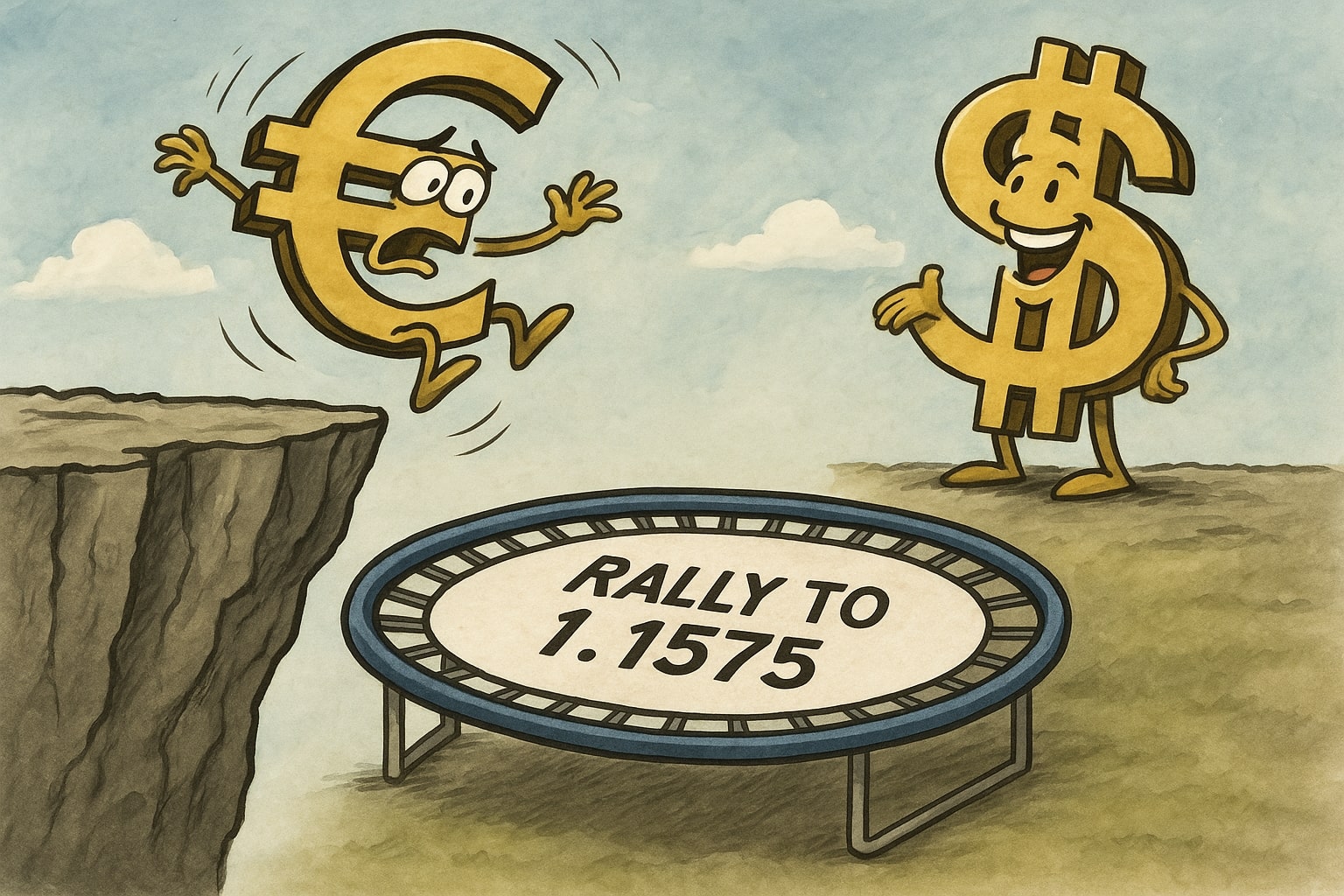
EUR/USD Faces Critical Resistance at 1.0800 – What’s Next for the Euro?
With the euro facing headwinds from weak Eurozone manufacturing data and U.S. economic pressures, will the EUR/USD break through its resistance at 1.0827 or dip further? | That's TradingNEWS
EUR/USD Struggles Amid Weaker Economic Data and Political Uncertainty
As the EUR/USD pair struggles to hold above the critical 1.0800 level, it has become increasingly clear that multiple factors are influencing its current performance. Following the weaker-than-expected Eurozone manufacturing data, which saw key countries such as Spain (49.5), Italy (46.6), France (48.5), and Germany (48.3) report disappointing numbers, the currency pair has been under pressure. This confirms that industrial weakness in the region is a growing concern for traders, and the outlook for the euro remains subdued. The EUR/USD is now hovering near 1.0802, below the resistance level at 1.0827 and struggling to maintain any significant upward momentum. The failure to break past the 50 EMA at 1.0814 indicates that the pair is trapped within a tight range, and there is a clear struggle for dominance between the bulls and bears.
Technical Indicators and Market Sentiment
With the Relative Strength Index (RSI) showing a neutral reading of 56 and the Moving Average Convergence Divergence (MACD) hinting at a slight bearish divergence, the near-term outlook for EUR/USD appears weak. The market sentiment remains cautious, and despite a slight bullish undercurrent from longer-term trend support, the pair is struggling to gain any meaningful traction. The current range-bound movement suggests that traders are waiting for a catalyst to drive the next significant move in the pair. Resistance is seen at 1.0810-1.0815, with immediate support around the 1.0777 level, followed by 1.0730, both of which are critical for determining the next direction.
The key to the next move in EUR/USD may lie in upcoming economic data from both the Eurozone and the U.S. Markets are keenly awaiting the release of important U.S. economic figures, including the ISM Manufacturing PMI, which is expected to dip to 49.5 from 50.3, signaling a potential slowdown in factory activity. Such a move could weaken the U.S. dollar, providing some support for EUR/USD. However, as long as the dollar maintains strength, particularly given the U.S. inflation data and the potential for future interest rate cuts by the Federal Reserve, the upside for EUR/USD remains capped.
The Influence of U.S. Dollar and Global Economic Dynamics
The U.S. dollar index (DXY) remains a key driver of the EUR/USD's movements. Currently trading at around 104.22, the DXY is showing signs of indecision, with the price compressing between the 50 EMA at $104.14 and resistance at $104.67. The dollar's performance is highly correlated with upcoming U.S. data, and the focus is now on the potential for rate cuts later this year, especially if the economic data disappoints. A strong U.S. dollar could keep pressure on EUR/USD, pushing it toward lower levels, possibly testing support at 1.0730-1.0709.
Moreover, geopolitical risks and political developments in the U.S., particularly regarding tariffs, could significantly affect market sentiment. The expectation of a tariff announcement by President Trump has already introduced volatility into the currency markets, and any significant news on this front could trigger a sharp reaction in the EUR/USD pair. In this environment, the EUR/USD will likely remain range-bound unless a major surprise in economic data or political developments triggers a decisive breakout.
Long-Term Outlook for EUR/USD: Navigating Through Economic Crosswinds
Looking further ahead, the EUR/USD pair faces a difficult path as the global economy grapples with multiple challenges. While the eurozone’s inflation rate has decreased slightly from 2.3% in February to 2.2% in March, it remains elevated, and the outlook for further economic recovery is uncertain. The ECB's policy stance will be closely watched, especially after the recent dip in inflation expectations. ECB President Christine Lagarde's comments will be key in determining the market’s next move.
The euro has shown resilience in recent days, with buying interest rising during periods of weakness. However, until the EUR/USD breaks above 1.0840-1.0850 and establishes a sustained bullish trend, the pair is likely to remain under pressure, stuck within its current trading range. Short-term traders will continue to focus on these technical levels, looking for any signs of a breakout or a further retreat toward lower support levels.
Conclusion: A Range-Bound Market with Limited Short-Term Upside for EUR/USD
With the EUR/USD stuck in a tight range and no clear breakout in sight, the immediate outlook for the pair remains neutral to bearish. The recent economic data from the Eurozone, combined with the uncertain U.S. economic trajectory and geopolitical risks, keeps the euro under pressure. Unless there is a significant shift in market sentiment or a catalyst such as a major shift in U.S. monetary policy or unexpected economic data, the EUR/USD pair will likely continue to trade within its current range, hovering between 1.0730-1.0850. For traders, caution is advised as the pair navigates these uncertain waters, with no clear direction emerging at this point.
















